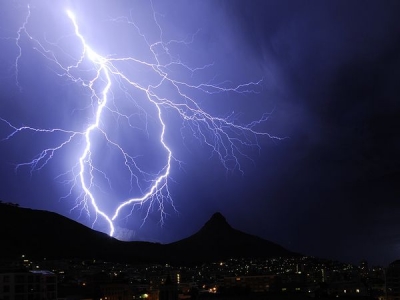
Lightning is a natural electrical discharge created by imbalances between a cumulonimbus cloud and the ground or within itself. Lightning is pure electricity involving small particles with positive and negative charges that pull toward each other like the north and south ends of magnets. Lightnings are scary and of course dangerous, but it is a subject of fascination for scientists. During thunderstorms, scientists witness a lot of lightning. On an average, scientists have mapped, there are about 100 lightnings per second worldwide.That’s a whopping number. Imagine the amount of energy that’s shooting up from the clouds. Each bolt can contain up to one billion volts of electricity. This means a single lightning flash has enough energy to light a 100-watt bulb for three months! So, How many homes could a lightning bolt power? Every lightning bolt on Earth in one year, captured perfectly with no loss of energy, would contain about 4*10^17 joules of energy. Thus, all the lightning in the entire world could only power 8% of US households. Human body can tolerate a maximum of between 20,000 and 50,000 volts, which might prove to be lethal. In most cases, a person’s heart will stop after being struck by lightning, so the key to survival is having someone nearby who can administer CPR. Even if you survive, a lightning strike will have long-lasting effects on your body, including memory issues, muscle soreness and changes in mood.
People often confuse lightning with thunder. To put it simply, lightning is electricity; thunder is sound. In other words, lightning is the sudden flash of light spotted in the sky, while thunder is the roaring, cracking sound that is commonly heard during thunderstorms. And because light travels faster than sound, lightning is seen before thunder can be heard.
Picture Credit : Google




